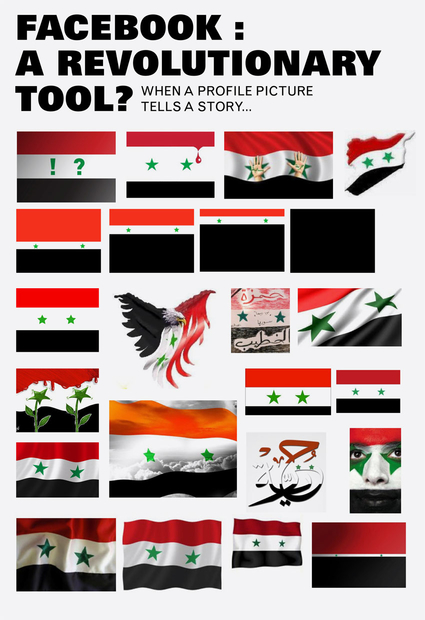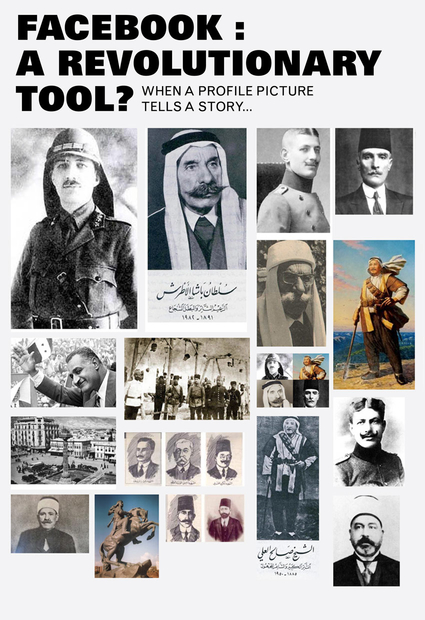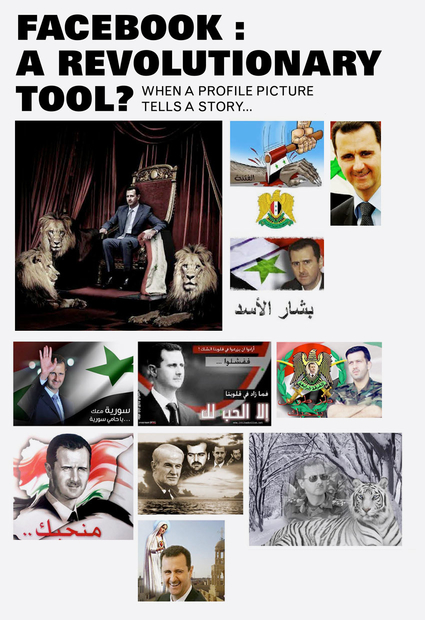Since the events of the Arab Spring in early 2011, and consequent revolutions, protests, resistance and uprisings in the Middle East, there have been mixed opinions related to the exact role that social network site Facebook contributed. It can be seen as a necessary platform to organise meetings and communicate up-to-the-minute events. In Syria Facebook has been one of the few mediums available to publish information about missing persons or otherwise invisible police brutality. However, Facebook is easily traceable, leaving the activities of its users vulnerable to those in power. Facebook was not made available at all in Syria until the start of the uprisings, making the role of the regime in suddenly being able to spy on Facebook users, rather dubious.
It is not a platform which is accessible to all those who participated in the protests and uprisings and therefore cannot be entirely accredited with enabling the organising of resistance. However, there are some interesting and innovate trends which have emerged concerning how the medium is used in order to express a spirit of resistance, which is simultaneously spied on and used by a regime.
The following examples are observations, extracted from the Facebook activities of Ghalia Elsrakbi, as she watched from the Netherlands, as the most powerful resistance to the regime in her country, Syria, emerged.
The “profile picture” was used as the most evident way to align Facebook users with a political side. Users could emphasise their alignment with the regime by posing on their profile as Bashar al-Assad himself, or as the supporting the resistance, often indicated with the use of images of famous Syrian leaders from the past. The flag, took on a specific symbolic and dynamic meaning as a profile picture. Changing elements like an enlarged red stripe indicated recent violent activities. The flag became a moving barometer and illustration of current unfolding events.
Several functional tools on Facebook were used for the purpose of evaluating the situation. The “voting” function on Facebook could be used to measure opinions among friends. Groups were started where videos, photos and news was broadcast. These channels of broadcasting allowed for the accumulation of recent events and activities as they took place. Witnesses were able to send information to the members of the group, allowing those who created the videos to remain anonymous. Ghalia noticed that these sources of information were a more accurate or useful source of news in comparison to regular news sources.
Ghalia noticed that, although she supports the regime opposition, many of her friends surprisingly had not chosen the same side. This meant losing friends because of their open declaration on Facebook of a political side, but also gaining new friends who followed the same cause. Not to mention those who’s online activities became a threat to their lives outside of the virtual world, and who were forced to deactivate their account.


